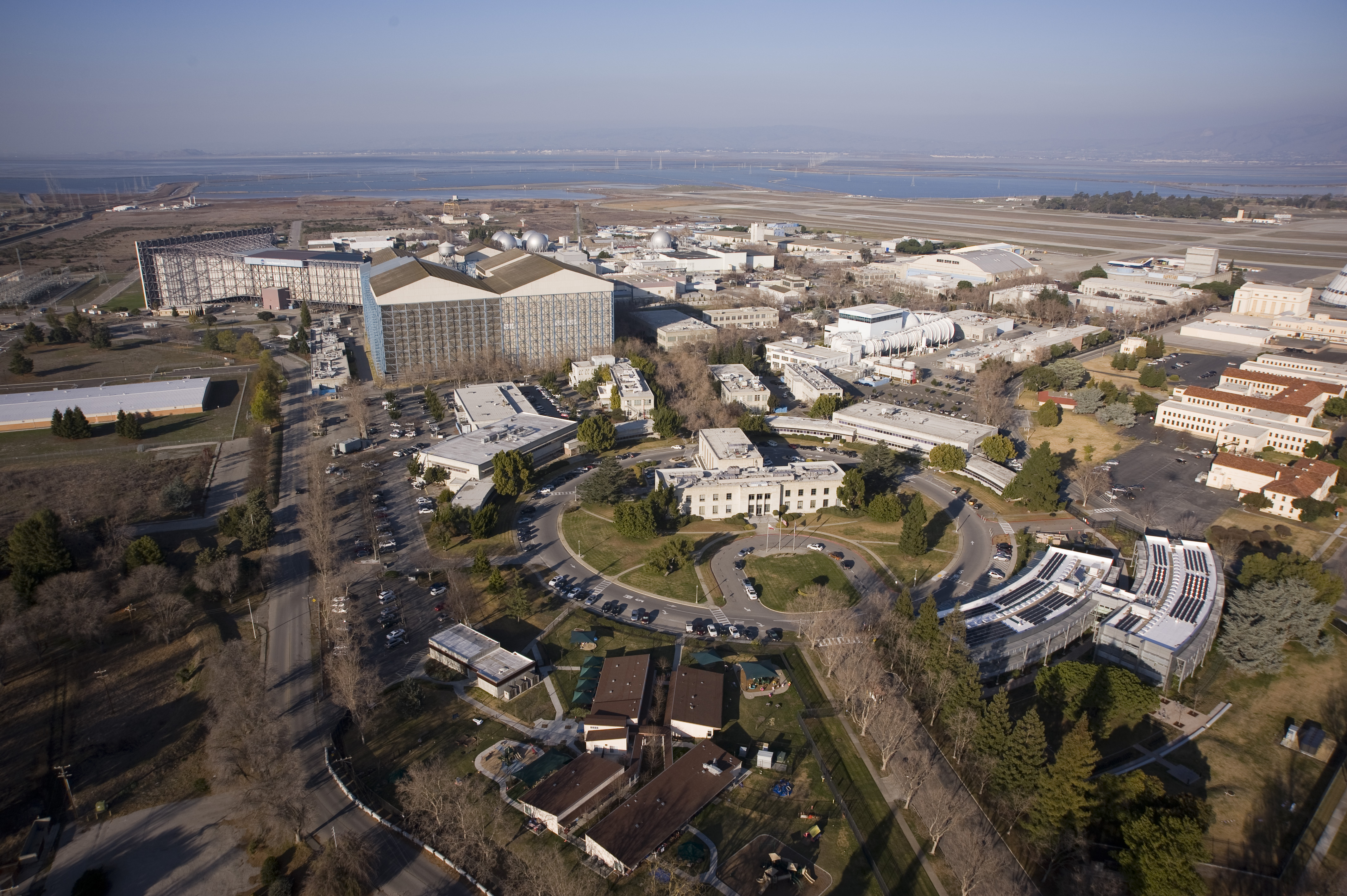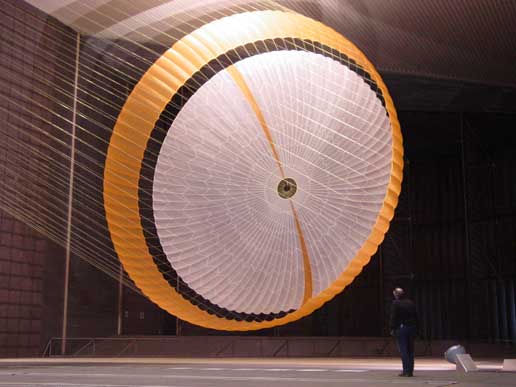Ames Research Center: R&D Lab for NASA

Ames Research Center is one of the oldest facilities currently operated by NASA. Lying just south of San Francisco, in the heart of Silicon Valley, Ames boasts a wealth of research projects. It is one of 10 NASA field centers.
"Ames Research Center … contributes to virtually every major NASA mission and initiative," the Ames website states.
History of Ames
Ames grew out of Moffett Field, which was originally conceived of as a base for the Navy's rigid airships in 1931. Local communities donated 100 acres for the base, while the government purchased an additional 750 acres, according to Elizabeth Muenger in the book "Searching the Horizon: A History of Ames Research Center, 1940-1976." At the time, the Navy had two such ships, the Akron and the Macon.
In 1939, Congress authorized a second laboratory for the National Advisory Committee for Aeronautics (NACA), the precursor to NASA, to be developed at Moffett. (The first was Langley Memorial Aeronautical Laboratory, which became Langley Research Center.) The Navy still hoped to develop rigid airships in the future, and requested that any NACA buildings be located outside the mooring circles. In December 1939, the Army gave NACA the use of 62 acres of land. The agency purchased another 40 acres from local farmers and began surveying building locations.
Ground was broken at Moffett Field, California, in 1939, and operations began in early 1941. In 1944, NACA named the facility in honor of Joseph S. Ames, leading aerodynamicist, former president of Johns Hopkins University, and one of the founding members of NACA.
From the start, Ames was bent toward urgent research in aircraft structures. Some of its original facilities include multiple wind tunnels used to test and refine aircraft and guided missiles; today, the facilities serve similar purposes for satellites. The Air Force passed Moffett Airfield to NASA in 1994, when the military base closed.
"Wind tunnels are central to Ames' history," says Ames' historical website. "Of particular note are three tunnels later designated key national resources."
The largest of the three, the Unitary Plan Wind tunnel, has tested almost all NASA crewed space vehicles, including the space shuttle, and is the only one still in use today. In 1985, the 11-acre wind tunnel was listed on the National Register of Historic Places.
"The Ames Unitary Plan Wind Tunnel is significant because it represents the continual development of superior technical aeronautical research facilities after the end of the Second World War," Harry Butowsky, then of the National Park Service, said on the nomination form.
"These research facilities formed the foundation upon which the National Aeronautics and Space Administration would draw in 1958 to launch the American effort to land a man on the moon."
In 1958, Ames became part of the newly formed National Aeronautics and Space Administration (NASA). Ames provided input to the fledgling agency's top priority, the lunar program, testing and refining the re-entry capsules and thermal protection in the Center's new Arc Jet Complex and hypervelocity ranges. The arc jets later contributed to thermal protection for all of NASA's crewed programs, including the space shuttle, as well as planetary missions like the Galileo satellite to Jupiter.
"The complex will continue to be central to the research and development of materials suitable for heatshield applications," the website says.
In the 1950s, Moffitt Field's Hangar One, one of the world's largest freestanding structures, was designated a Historic American Engineering Record; in 2008, the 8-acre structure was listed as one of the most endangered historic places. In 2014, NASA leased the management of Hangar One and Moffett airfield to Planetary Ventures, a subsidiary of Google, for 60 years. Restoration of the hangar by Google is expected to be complete in 2025.
"We're looking to be as efficient as possible, but it's hard to say (when we'll be done). All our schedules are subject to change," Anthony LaMarca told the Moffett Field Restoration Advisory Board in 2017, a local newspaper reported. LaMarca is the project manager for Planetary Ventures. "By the time we get through all these steps, the skin will be done by 2025. That's quite a ways out."
The hangars were included as part of the U.S. Naval Air Station, Sunnyvale Historic District, also known as the Shenandoah Plaza, when the district was listed on the National Register of Historic Places in 1994.
In 2017, several Ames facilities were listed on the National Register of Historic Places. These include the Ames Administration building, the Aviation Systems Division's flight simulation and guidance laboratory, the Arc Jet Complex, and the NASA Ames Wind Tunnel Historic District.

The here and now
NASA Ames Research Center has grown over the past seven decades. Today, it has approximately 2,500 on-site employees and contractors spread across 500 acres.
Ames emerged as the leading builder of flight simulators in the 1960s, with a wide range of simulators, equipment and facilities developed by the park to improve pilot workloads, cockpit design and safety. In particular, the Vertical Motion Simulator still enables testing of a variety of aircraft.
Ames also has a life science program. The agency boasts various centrifuges, two of which are unique to the agency, as well as genome facilities. Future Flight Central remains a sophisticated facility for basic research on movement into and around airports.
In the 1990s, Ames expanded its research to new realms. Nanotechnology laboratories aim to help reduce mass in space while increasing capability, while astrobiology facilities include a world-renowned astrochemistry laboratory to simulate deep space, a bio-mat greenhouse laboratory to study Earth's earliest living organisms, and bio-signature labs.
Ames is also investigating exoplanets. The center provides scientific and management leadership of NASA's Kepler mission, which has discovered over 6,500 exoplanets and exoplanet candidates. The Ames Coronagraph Experiment (ACE) is a laboratory testbed for potential instruments to help NASA directly image exoplanets in the future.
The agency lists eight core competencies on its website that it says helps it to contribute to virtually every NASA mission. They are:
- Entry systems
- Advanced computing & IT systems
- Aerosciences
- Air Traffic Management
- Astrobiology and Life Sciences
- Cost-Effective Space Missions
- Intelligent/Adaptive Systems
- Space and Earth Science
Ames is active on several NASA missions. It serves as a partner for NASA's Stratospheric Observatory for Infrared Astronomy (SOFIA), the world's largest airborne astronomical observatory, as well as for the International Space Station and Mars Science Laboratory and the Curiosity rover currently operating on the Red Planet. It is also a partner on the New Horizons mission, which flew by Pluto in 2015 and is on its way to rendezvous with a distant Kuiper-belt object.
Visiting Ames
While the massive research center itself is closed to the public, the nearby visitor center is open to all. With an exterior resembling a melting marshmallow, the visitor center has a self-guided walkthrough that discusses the research at Ames.
Current exhibits include Science on a Sphere, Ames Spacecraft missions, a moon rock, a Mercury Redstone 1a capsule used in the last unmanned test flight before Mercury 7, a wind-tunnel model of SOFIA, a Kepler display, and a walk-through model of the International Space Center on Living and Working in Space. The center offers videos of varying lengths.
While individuals and small groups are welcome to drop in, groups of ten or more require reservations.
The centers hours are: 10 a.m. – 4 p.m., Tuesday – Friday; noon – 4 p.m., Saturday and Sunday. The visitor center is closed Mondays and federal holidays. To contact the visitor center, call (650) 604-6497.
Additional resources
- Ames Research Center Overview
- History of Ames Research Center
- National Historic Register for Moffett Field
- Searching the Horizon: A History of Ames Research Center, 1940-1976 (online book)
Follow Nola Taylor Redd at @NolaTRedd, Facebook, or Google+. Follow us at @Spacedotcom, Facebook or Google+.
Join our Space Forums to keep talking space on the latest missions, night sky and more! And if you have a news tip, correction or comment, let us know at: community@space.com.
Get the Space.com Newsletter
Breaking space news, the latest updates on rocket launches, skywatching events and more!

Nola Taylor Tillman is a contributing writer for Space.com. She loves all things space and astronomy-related, and enjoys the opportunity to learn more. She has a Bachelor’s degree in English and Astrophysics from Agnes Scott college and served as an intern at Sky & Telescope magazine. In her free time, she homeschools her four children. Follow her on Twitter at @NolaTRedd










